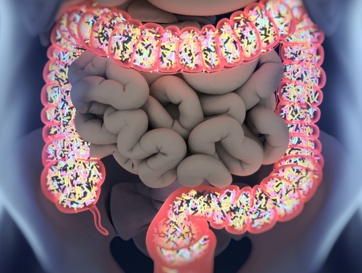Household Cleaning Products Might Contribute to Childhood Overweight
Regular use of household cleaning products might contribute to risk for overweight in childhood by altering children’s gut microbiota, according to research published in the Canadian Medical Association Journal.
Anita L. Kozyrskyj, PhD, professor of pediatrics at the University of Alberta, and colleagues also found that children who lived in homes that used eco-friendly cleaners had different microbiota and were less likely to be overweight by age 3.
“Antibacterial cleaning products have the capacity to change the environmental microbiome and alter risk for child overweight,” they wrote. “Our study provides novel information regarding the impact of these products on infant gut microbial composition and outcomes of overweight in the same population.”
Kozyrskyj and colleagues analyzed data from the Canadian Healthy Infant Longitudinal Development (CHILD) birth cohort to test associations between maternal report of cleaning product use and overweight at age 3. They also sought to find if associations were mediated by microbial profiles of fecal samples in infants aged 3months to 4 months.
Among children in the CHILD cohort (n = 757), researchers found that specific gut microbiota was associated with disinfectants and eco-friendly products in a dose-dependent manner.

In homes that used disinfectants more often, Lachnospiraceae became more abundant (highest vs. lowest quartile of use, adjusted OR = 1.93; 95% CI, 1.08–3.45), and genus Haemophilus declined in abundance (aOR = 0.36; 95% CI, 0.2–0.65). Abundance of Lachnospiraceae mediated associations of the top 30th percentile disinfectant use with higher BMI z score (P = .02) and with increased odds of overweight or obesity at age 3 (P = .04).
“We found that infants living in households with disinfectants being used at least weekly were twice as likely to have higher levels of the gut microbes Lachnospiraceae at age 3-4 months,” Kozyrskyj said in a press release. “When they were 3 years old, their body mass index was higher than children not exposed to heavy home use of disinfectants as an infant.”
Using eco-friendly products helped deplete Enterobacteriaceae (aOR = 0.45; 95% CI, 0.27–0.74). However, eco cleaners were associated with decreased odds of overweight or obesity independently of Enterobacteriaceae abundance (aOR = 0.44; 95% CI, 0.22–0.86).
“Those infants growing up in households with heavy use of eco cleaners had much lower levels of the gut microbes Enterobacteriaceae,” Kozyrskyj said in the release. “However, we found no evidence that these gut microbiome changes caused the reduced obesity risk,” – by Alex Young
Disclosures: The authors report no relevant financial disclosures.

